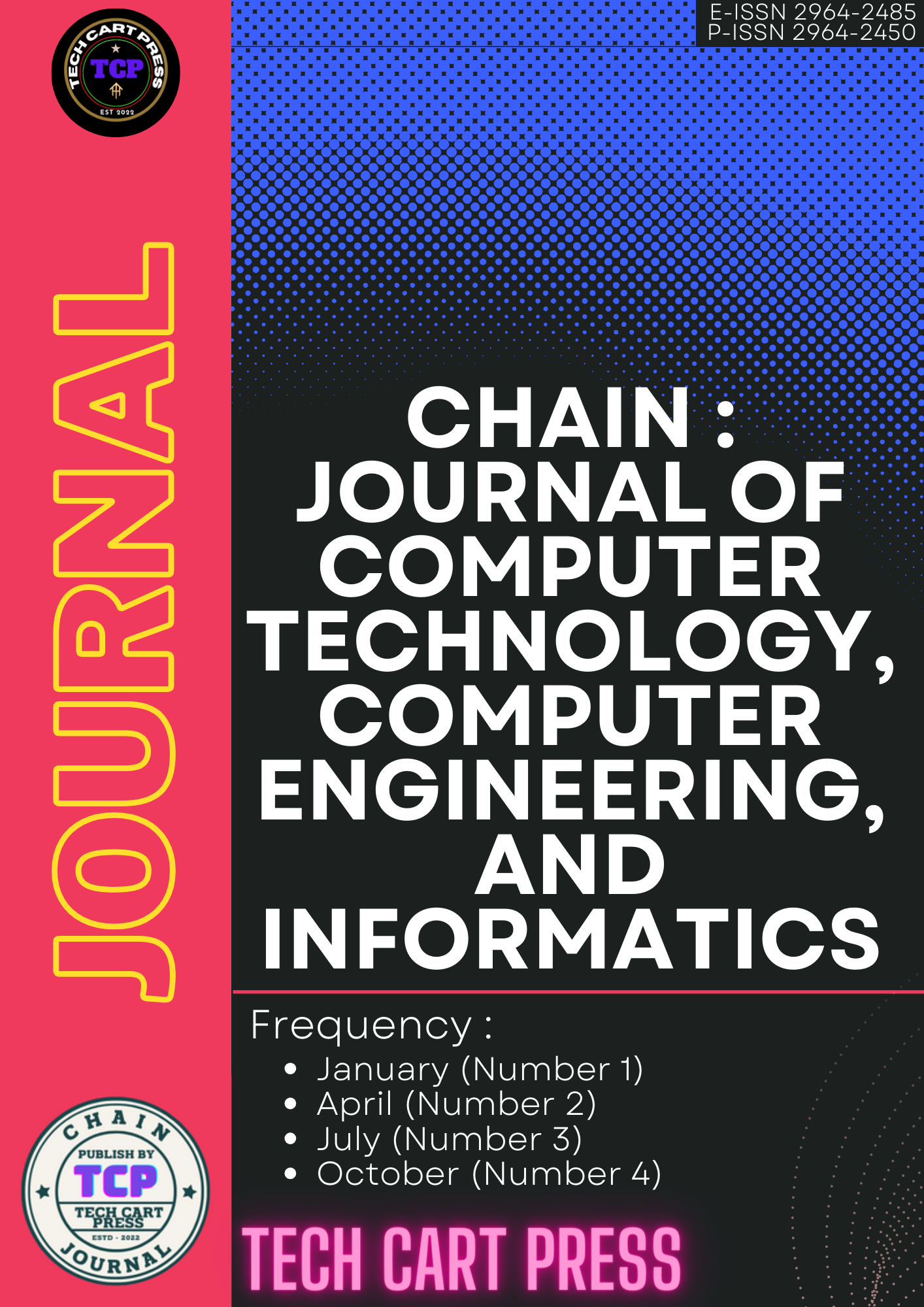Sistem Pendukung Keputusan untuk Evaluasi Kinerja Menggunakan Metode TOPSIS: Studi Kasus Penilaian Karyawan
Abstract
Employee performance evaluation is a systematic process carried out by an organization to assess the contribution, ability, and achievement of individuals in carrying out their duties and responsibilities. This process is not only aimed at identifying the best performers, but also to uncover potential employee development as well as areas for improvement. Employee performance evaluations often face challenges in ensuring the objectivity of the assessment, especially when relying on the subjective perception of the appraiser. Traditional methods often rely on the subjectivity of the assessor, which can result in less accurate or unfair evaluations. In addition, in organizations that have many employees with diverse backgrounds and tasks, consistent and comprehensive assessments are becoming increasingly difficult. The purpose of this study is to implement SPK based on the TOPSIS method to evaluate employee performance objectively and systematically, as well as to increase transparency and consistency in the employee performance evaluation process. The ranking results show the ranking of employee performance evaluation results based on the scores obtained by each candidate. Candidate AF ranked first with the highest score of 0.8471, followed by Candidate SR with a score of 0.7055 got second place. The third position was occupied by HA Candidate with a score of 0.4975. The results of this ranking provide an overview of each candidate's overall performance.
References
A. Hia, M. Marsono, and T. Syahputra, “Sistem Pendukung Keputusan Menentukan Performance Cleaning Service Menggunakan Metode COPRAS,” J. Sist. Inf. Triguna Dharma (JURSI TGD), vol. 1, no. 3, p. 157, May 2022, doi: 10.53513/jursi.v1i3.5120.
F. Tanzil, S. Saepudin, F. Sembiring, N. D. Arianti, and A. Erfina, “SISTEM PENDUKUNG KEPUTUSAN PENILAIAN CALON SUPERVISOR DENGAN MENGGUNAKAN METODE FUZZY ANALYTICAL HIERARCHY PROCESS (FAHP),” J. Ris. Sist. Inf. dan Teknol. Inf., vol. 3, no. 3 SE-smart business, Dec. 2021, doi: 10.52005/jursistekni.v3i3.111.
M. Darmowiyono et al., “Application of the Simple Multi Attribute Rating Technique (SMART) Method in the selection of thrush medicine products based on consumers,” J. Phys. Conf. Ser., vol. 1783, no. 1, p. 012015, Feb. 2021, doi: 10.1088/1742-6596/1783/1/012015.
S. Sukamto, A. Fitriansyah, and R. A. Nugrah, “DECISION SUPPORT SYSTEM FOR SELECTION OF PESTICIDES FOR CHILI PLANTS USING THE MABAC METHOD,” J. Tek. Inform., vol. 4, no. 5, pp. 1109–1118, Oct. 2023, doi: 10.52436/1.jutif.2023.4.5.977.
L. Siciliani, V. Taccardi, P. Basile, M. Di Ciano, and P. Lops, “AI-based decision support system for public procurement,” Inf. Syst., vol. 119, p. 102284, Oct. 2023, doi: 10.1016/j.is.2023.102284.
J. Wang, D. Darwis, S. Setiawansyah, and Y. Rahmanto, “Implementation of MABAC Method and Entropy Weighting in Determining the Best E-Commerce Platform for Online Business,” JiTEKH, vol. 12, no. 2, pp. 58–68, 2024, doi: 10.35447/jitekh.v12i2.1000.
J. Wang, S. Setiawansyah, and Y. Rahmanto, “Decision Support System for Choosing the Best Shipping Service for E-Commerce Using the SAW and CRITIC Methods,” J. Ilm. Inform. dan Ilmu Komput., vol. 3, no. 2, pp. 101–109, 2024, doi: 10.58602/jima-ilkom.v3i2.32.
R. Y. Simanullang and M. Mesran, “Penerapan Metode Multi-Objective Optimization on the Basis of Ratio Analysis (MOORA) dengan Pembobotan Rank Order Centroid (ROC) Dalam Sistem Pendukung Keputusan Pemilihan Guru Terbaik,” KLIK Kaji. Ilm. Inform. dan Komput., vol. 3, no. 5, pp. 466–475, 2023, doi: 10.30865/klik.v3i5.733.
N. D. Puspa, M. Mesran, and A. F. Siregar, “Penerapan Metode Maut Dengan Pembobotan Entropy Dalam Sistem Pendukung Keputusan Penilaian Kinerja Guru Honor,” J. Inf. Syst. Res., vol. 5, no. 1, pp. 24–33, 2023.
A. T. Hidayat, N. K. Daulay, and M. Mesran, “Penerapan Metode Multi-Objective Optimization on The Basis of Ratio Analysis (MOORA) dalam Pemilihan Wiraniaga Terbaik,” J. Comput. Syst. Informatics, vol. 1, no. 4, pp. 367–372, 2020, doi: 10.47065/josyc.v1i4.444.
Q. Wang, T. Cheng, Y. Lu, H. Liu, R. Zhang, and J. Huang, “Underground Mine Safety and Health: A Hybrid MEREC–CoCoSo System for the Selection of Best Sensor,” Sensors, vol. 24, no. 4, p. 1285, Feb. 2024, doi: 10.3390/s24041285.
D. Sedghiyan, A. Ashouri, N. Maftouni, Q. Xiong, E. Rezaee, and S. Sadeghi, “RETRACTED: Prioritization of renewable energy resources in five climate zones in Iran using AHP, hybrid AHP-TOPSIS and AHP-SAW methods,” Sustain. Energy Technol. Assessments, vol. 44, p. 101045, Apr. 2021, doi: 10.1016/j.seta.2021.101045.
D. D. Trung and H. X. Thinh, “A multi-criteria decision-making in turning process using the MAIRCA, EAMR, MARCOS and TOPSIS methods: A comparative study,” Adv. Prod. Eng. Manag., vol. 16, no. 4, pp. 443–456, Dec. 2021, doi: 10.14743/apem2021.4.412.
A. Mufid, K. Auliasari, and R. P. Prasetya, “SISTEM PENDUKUNG KEPUTUSAN PEMILIHAN MOBIL BEKAS MENGGUNAKAN METODE TOPSIS,” JATI (Jurnal Mhs. Tek. Inform., vol. 7, no. 4, pp. 2333–2340, 2023.
Setiawansyah, A. A. Aldino, P. Palupiningsih, G. F. Laxmi, E. D. Mega, and I. Septiana, “Determining Best Graduates Using TOPSIS with Surrogate Weighting Procedures Approach,” in 2023 International Conference on Networking, Electrical Engineering, Computer Science, and Technology (IConNECT), 2023, pp. 60–64. doi: 10.1109/IConNECT56593.2023.10327119.
E. Aydoğdu, E. Güner, B. Aldemir, and H. Aygün, “Complex spherical fuzzy TOPSIS based on entropy,” Expert Syst. Appl., vol. 215, p. 119331, 2023.
Copyright (c) 2024 Aditia Yudhistira, Tri Widodo

This work is licensed under a Creative Commons Attribution-ShareAlike 4.0 International License.






